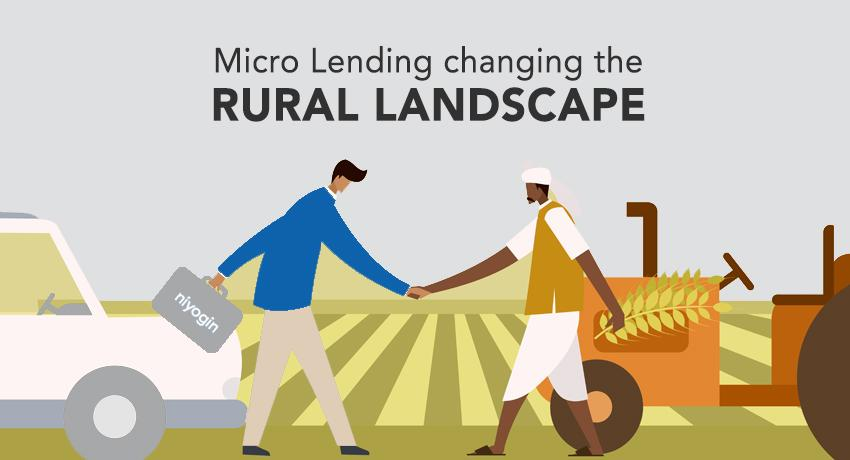The origination of the micro-lending industry in India dates back to the 1980s when India took inspiration from Bangladesh’s successful reforms where they benefitted from distributing loans to the underprivileged women of their region. What began as an experiment, quickly turned into something substantial for India. Today, India’s micro-lending portfolio stands at Rs 2.93 Lakh crore with 6 crore unique borrowers and shows a further growth of 23.5% yearly.
With a loan portfolio worth Rs 2.93 lakh crore, the microfinance industry grew by over 16 times in the last 10 years. Majorly served by 202 businesses, roughly over 130 million Indian households, i.e., one-third of the population have access to microfinance as per NABARD’s Status of Microfinance in India report for 2020-2021.
Over the years, the success of micro-financing has witnessed a visible shift from banks to NBFCs. According to Sa-Dhan – an association of the Micro-Finance Institutions (MFIs), the NBFC sector is currently dominating with a usage share of 37.53% while banks take a 36.18% slice of the pie, giving away the remainder to other institutions. The total portfolio size of NBFC- MFIs has grown nearly by 7% quarter-on-quarter and amounted to Rs 1,01,678 crore as on September 2022. Inquiring deeper, as per Microfinance Institutions Network, NBFC-MFIs have 22% of their portfolio in urban India and 78% in rural.
What has been the micro-lending threat in Rural India
Small business owners and merchants, especially ones residing in rural India were often left underserved by the mainstream financial institutions given the high-risk quotient they bring with them. High operational costs coupled with the threat of fraud, defaults and NPAs often left banks in a grey area on how to service the said market.
Moreover, Regional Rural Banks (RRBs) that service the rural market often face trouble with inadequate finance since they depend on NABARD to collect finance for their further operation. Given that rural households often have low capital income and hence, collecting deposits to raise funds has been the root cause of this entire fiasco.
Rural households largely depend on natural resources like agriculture and other rural economic activities for their survival therefore, natural calamities and other natural menaces play a big role in the success of their business cycle. However, reimagining a way with lower operating and market costs by financial institutions has ensured an improved lifestyle for many rural households. It has further led to the growth of the said sector.
Micro-lending changing the landscape
Micro-loans are distributed by a range of institutional channels–
- Scheduled commercial banks (including small finance banks and regional rural banks)
- Cooperative banks
- Non-banking financial companies
- Microfinance institutions
However, NBFCs hold a major chunk of this market followed by banks and other micro-finance institutions. A combined amount of Rs 45,830 crore in the form of micro-loans was disbursed in the quarter ending December 2022.
Micro-lending institutions are expanding their services by introducing other financial services like insurance, remittance, AePS, etc. while providing training and assistance to the unversed. As for the market leaders; NBFCs have introduced a new technology that enables borrowers to make daily repayments against their loans called Equated Daily Instalments. They have also introduced PoS devices, apps, etc. to allow small businesses to benefit from digital payment methods. Despite a myriad of services already designed for small businesses, financial institutions still have a great scope of work in the said segment.
With the MSME sector offering 111 million job opportunities and contributing to close to 30% of the nation’s GDP, there’s still a credit gap of $397 billion; a sizeable opportunity for financial institutions.
With the RBI’s new guideline published on March 14, 2022, where they have notched up their support, micro-loans have been defined as collateral-free loans to a household comprising husband, wife and unmarried children and with a yearly income of up to Rs 3 lakh (revised from Rs 2 lakh for urban areas and Rs 1.6 lakh for rural areas earlier). The new rules also lift the price cap on interest rates to ensure that all microlenders are brought on common ground.
Where rural households with small businesses struggled to avail basic amenities are today given access to a range of financial services allowing them to attain financial freedom. Micro-lending is changing the rural landscape by offering households the finance they require to build themselves. Although the service is still in its embryonic stage with a wide gap to fill, it can widen its audience range and promote inclusivity in the long run.
